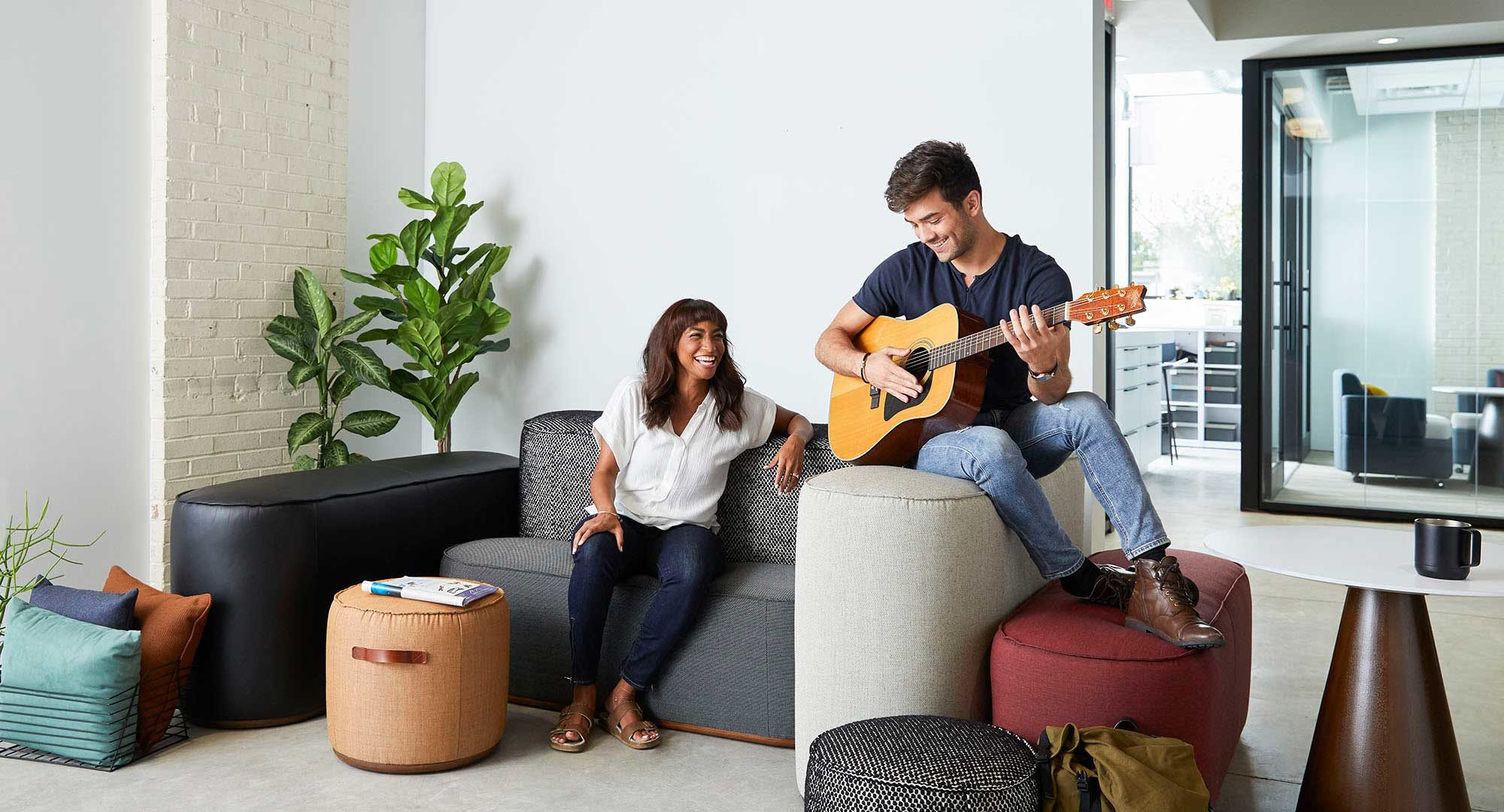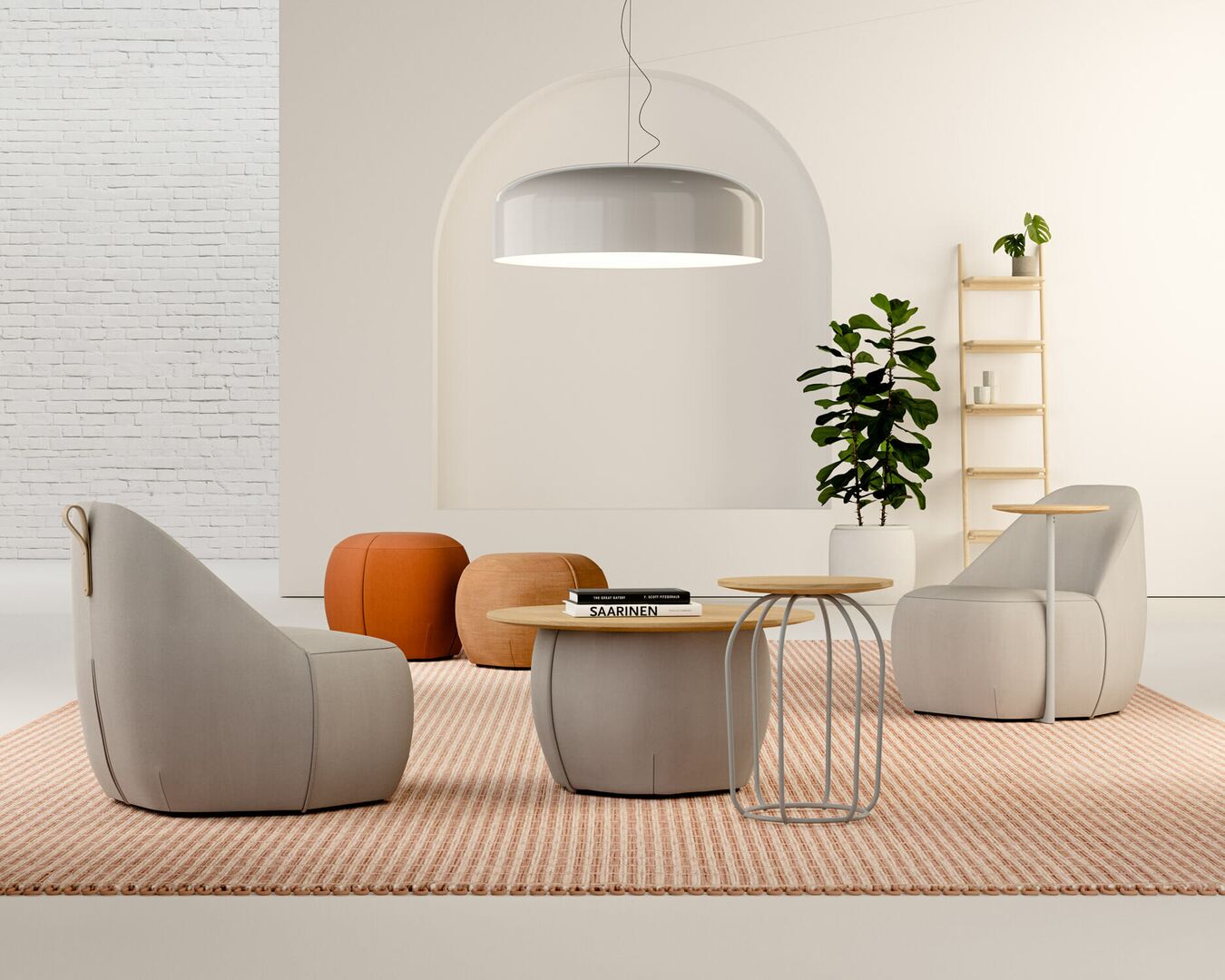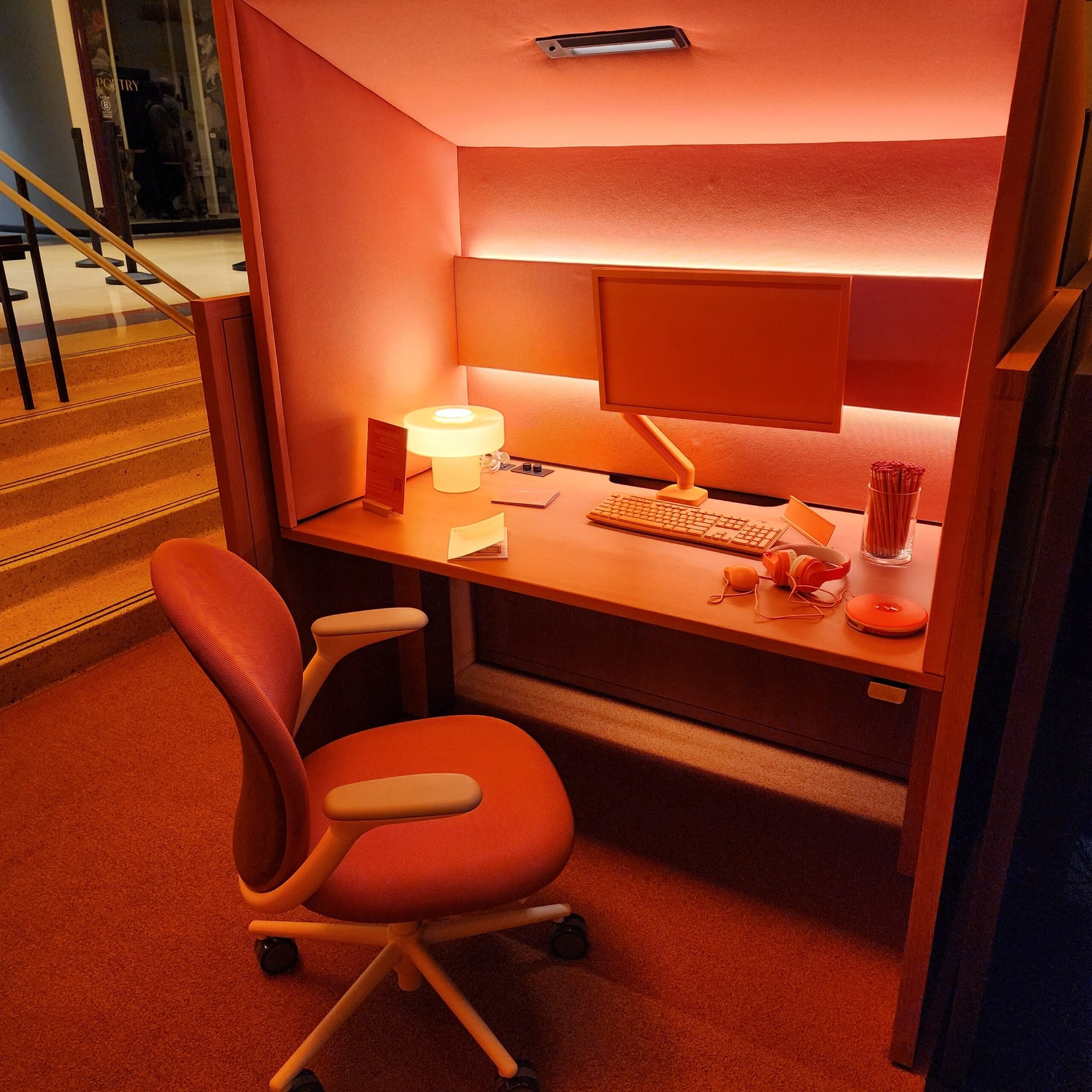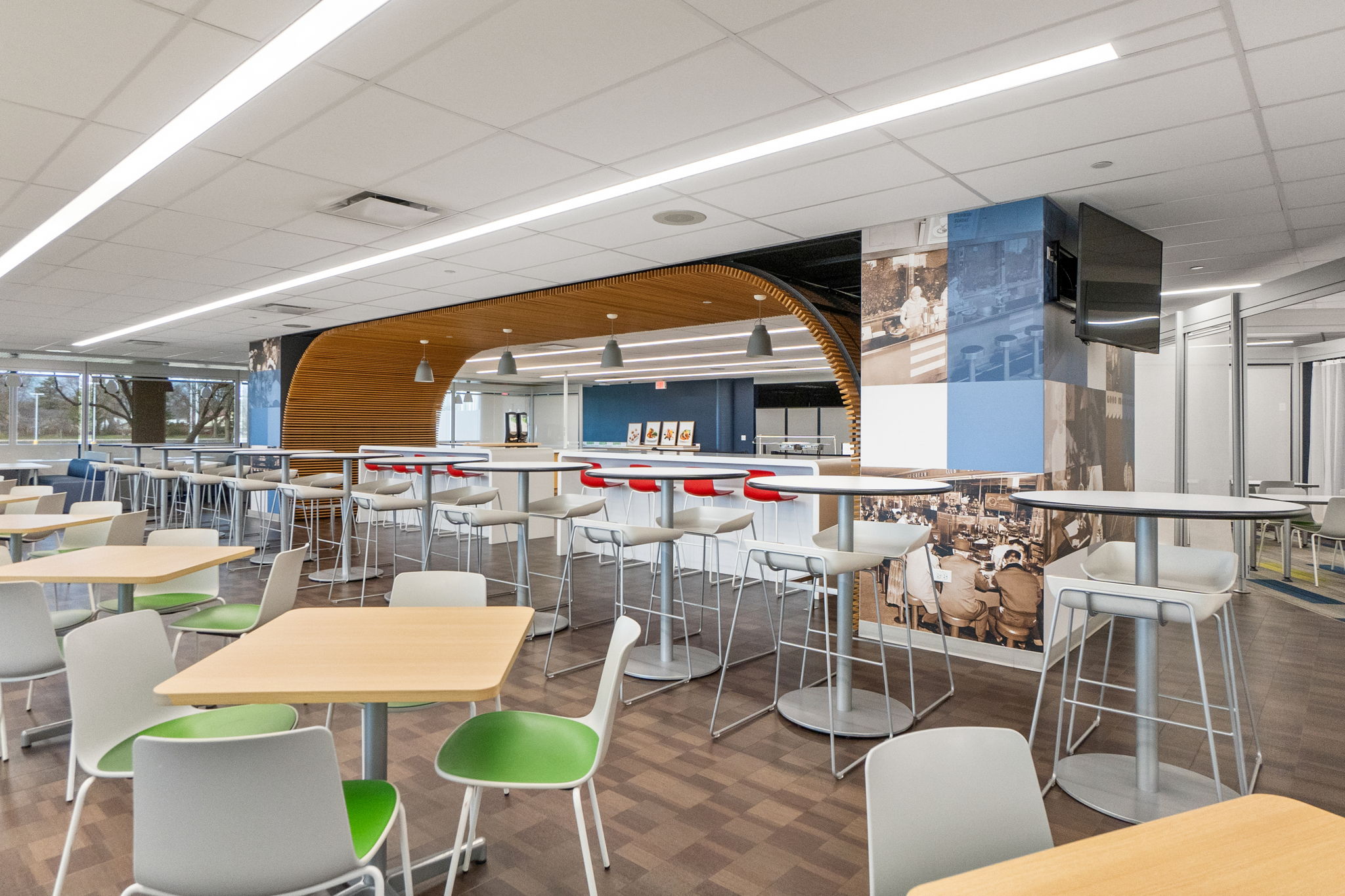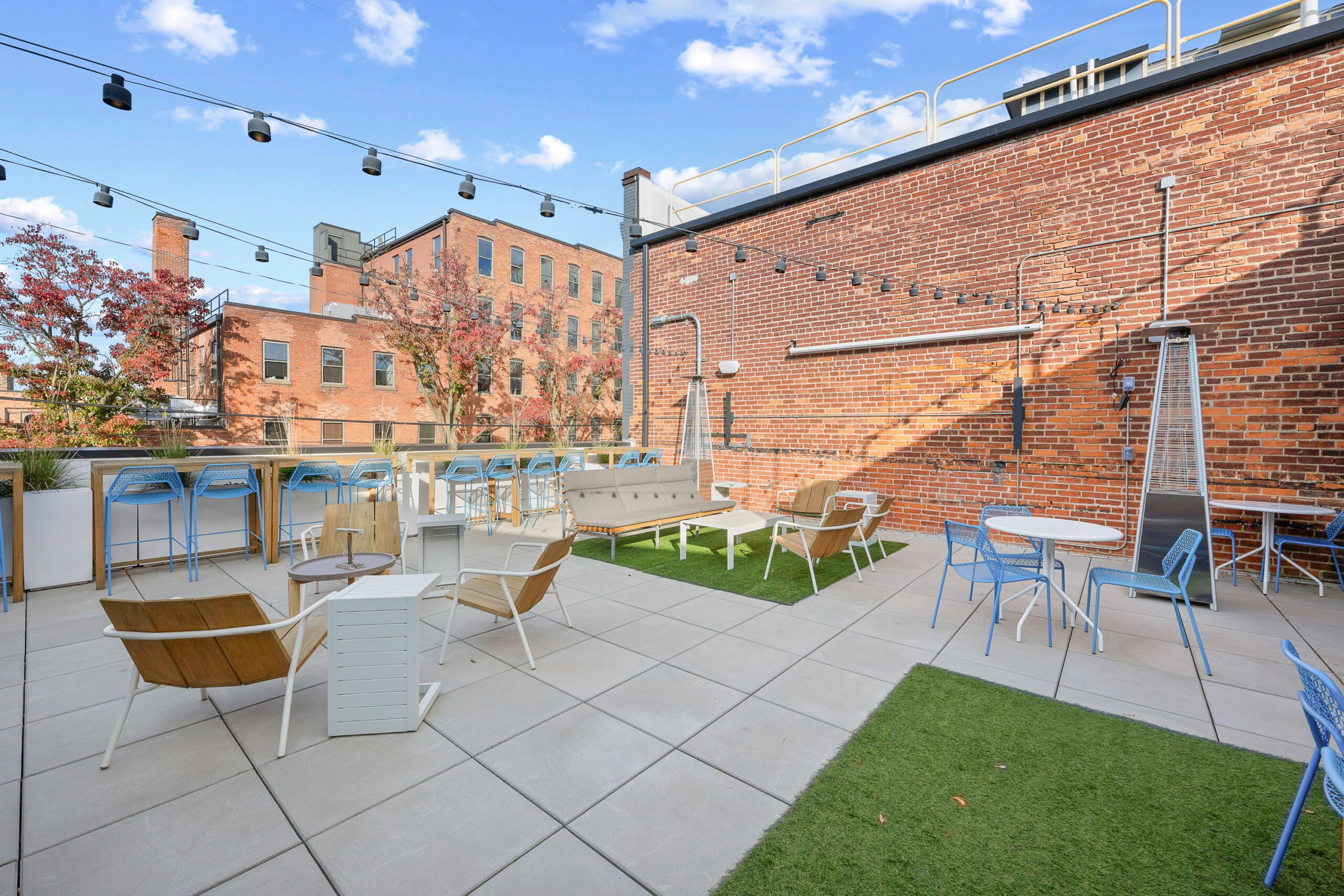Offices are literally the physical heart and soul of a business and there is no better place for casual interactions, collaboration, innovation, and creativity. Leaders understand their inherent value, but right now, they also recognize that they need to reconfigure and, in some cases, redesign their spaces. They need to make them into destinations where people want to come to. These updated spaces need to provide areas for employees to converge, thrive, learn, grow, inspire, innovate, create, and collaborate. Not via Zoom or Teams from a spare room or home office, but together in a physical space.
Convincing remote employees and those working from home (WFH) to return to the office, even just part-time, will be critical for the future success of businesses. In order for this to happen, offices need to become destinations and provide an experience. Places that people get excited about coming into and that they fear missing out (FOMO) if they don’t come into a physical workplace.
The Traditional Office is Changing
The office location, size, design, layout, and how they make us feel are some of the issues that will need to be addressed as we look toward the future. The office is evolving and becoming more agile — it has to! More office workers are expecting flexibility in where they work. Recognizing this coming shift is the easy part. Understanding how workplace strategies need to adjust is the challenge.
Going forward, people want more flexibility, including virtual options and collaboration spaces. Layouts are becoming less focused on individual workstations and trending more toward incorporating cozy, Resimercial design elements with lots of collaborative spaces. There is also an increase in the proliferation of amenities and the incorporation of biophilic elements and access to fresh air. Technology has become even more important and we’re seeing tech-enabled everything along with the prioritization of health and wellness at the forefront of post-pandemic design.
The end result of all of this is the creation of a new future for the workplace – The New Workplace Ecosystem.
By definition, an ecosystem is a group of interconnected elements, formed by the interaction of a community with its environment. We can think of the New Workplace Ecosystem in much the same way. It will be a suite of places and spaces that provide the best environment for the work being performed. Different workers and teams have various needs for how they work, when they work, and where they work. Thinking through how we work each day reveals how we work best, matching our behaviors and experiences to the places and spaces that support them most effectively.
How It Impacts Traditional Work Styles
There are essentially six styles of work being performed by your employees on any given day, and your workplace should provide spaces that support each of them. Those styles are – research, focus, connection, growth, nurturing, and spaces for meetings. Each style of work is also tied to your furniture along with your desired spatial arrangements. Different companies require different configurations to tailor to their employee’s needs, and the designs incorporated have the ability to foster both connection and community. The result is spaces that are engaging and inspiring, that deliver creative and human-centered solutions, and also support organizational needs while activating the engagement of your team.
Your employees aren’t the same as they were in March 2020, and your office design shouldn’t be either. It’s not as simple as having three work options – remote, hybrid, or in-office workers. Your employees don’t think or work in the same way they did when they left the office, and your layout needs to evolve. Going forward your office needs to be a destination – a collaborative and social hub but with space for private work. It needs to be visually attractive and reflective of your firm’s environmental and social beliefs with a focus on wellbeing. It needs to become an ecosystem that enables productivity and can also be leveraged as a recruitment and retention tool.
The new era of work calls for a very different style of office than the traditional spaces of the past. That said, a dramatic reconfiguration or redesign may not be needed. Making a few strategic, relatively simple changes can help to improve your workflow, increase employee satisfaction, and raise productivity levels. Your physical office spaces will continue to play a central role in the new workplace ecosystem. Offices will always be a place for people and teams to come together to work individually, but also to do group work and to connect. It helps to build relationships and improve company culture, and most importantly, the #1 purpose for coming into the office – collaboration.
Incorporating Alternative Work Options
Local coffee shops, parks, libraries, coworking spaces, and other ‘third-places’ or alternative spaces play a crucial role in the new workplace ecosystem. Younger generations view these spaces as terrific options for when they want to have some flexibility and get some remote work done. They enjoy having the autonomy to change their working environment on a day-to-day basis or simply on a whim.
They see these alternative spaces as an extension of the office and another way to potentially attract and retain talent. That said, depending on your organization’s current office footprint, these types of environments might be easier to access than you think. In fact, they may already be available within your office building. Just having the ability to get outside the office and get work in a common area of the building or in a café, terrace, or amenity lounge is all you really need. It provides your employees with a sense of autonomy while also encouraging departments and teams to collaborate and optimize their time together.
Where the Workplace is Headed
When all is said and done, work is a collaborative process, and we can create a thriving community by designing workplaces to optimize productivity, connection, innovation, and well-being. The workplace ecosystem of the future will be an integrated environment that centers on remaining human, helpful, and holistic while offering openness, convenience, and flexibility.
Your team members will arrive at their own conclusions about what is the right spatial mix for them, whether it’s from home, the office, or a third/alternative space. Right now, successful organizations have the opportunity to reconfigure and transform their workplace arrangements and policies. The focus should be on providing more flexibility, offering multiple locations that enhance work styles and the overall well-being of your employees.
To be successful in the New Workplace Ecosystem we need to remain flexible and focus on creating innovative and inspiring spaces as well as offering work arrangements and options that match our employees’ preferred work modes. We should be embracing this opportunity to develop new styles of working and always remember that successful workspace design is not just a skill, it’s much more than that. It’s your culture – and you can’t put a price tag on culture.
For assistance with creating your New Workplace Ecosystem strategy, contact Rightsize Facility today.

